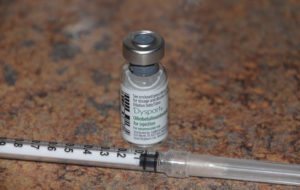
Some of the reported differences with Dysport is that it has a faster onset of action than Botox. Rather than waiting for a week to work with Botox, Dysport begins to work in just a day or so. Another important difference is that the effect of Dysport is reported to last longer than Botox, sometimes by a month or longer. Although it should be pointed out that no studies have ever been done yet that compares Dysport to Botox in a head-to-head comparison. So the longer lasting benefits of Dysport are largely anectodal but may well be real.
Dysport also has a wider area of effect, known as spread. This suggests that injections may be spaced further apart, resulting in fewer needle sticks to get a good effect. Because of the spread difference, there will be instances when a patient could be injected with both Dysport and Botox in the same treatment session. For example, Dysport may be used in the forehead while Botox is injected into the crow’s feet area.
Although the marketing for both Botox and Dysport will become spirited, it remains to be seen which product patients will find more appealing. Some patients will undoubtably keep using Botox because of its familiarity and successful use. Others will become new adopters since some patients are always looking for new treatment options and want to use the latest available technology. In my Indianapolis plastic surgery practice, I think patients who are very happy with Botox will continue to request it. However, there are definitely patients who were never completely satisfied with their Botox results or who feel that its effects are ‘weakening’or developing resistance.
One of the potential benefits of Dyport may be its pricing. It is being touted that the purchase price is 10% to 20% less than Botox which may allow for some pricing flexibility. It is believed that Dysport will have to be offered at a lower price to gain any traction in the marketplace. Whether Dysport will ultimately be lower in price than Botox at the patient level remains to be seen. As a treatment provider, there is more to pricing than just the raw purchase price of the bottle. If widespread clinical practice does show that Dysport lasts longer, it is unlikely than a lower price will persist for long.
Dr. Barry Eppley
Indianapolis, Indiana


